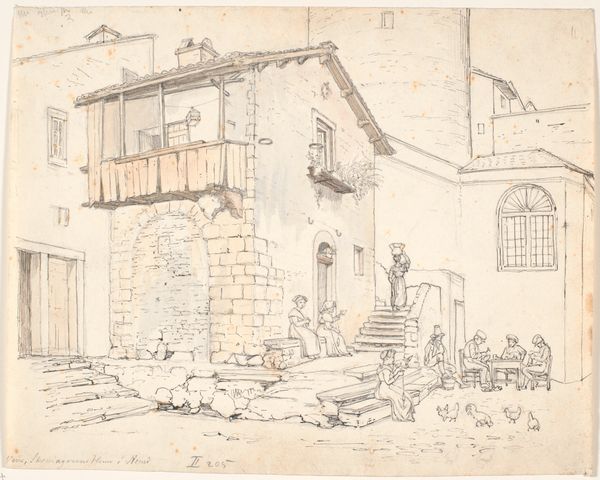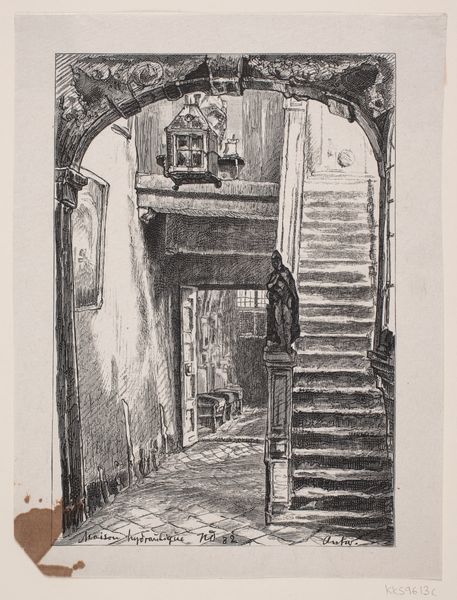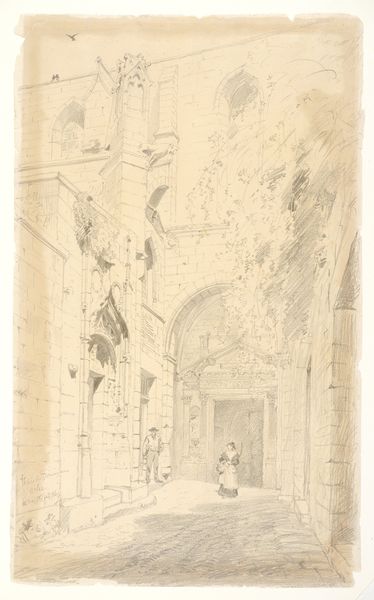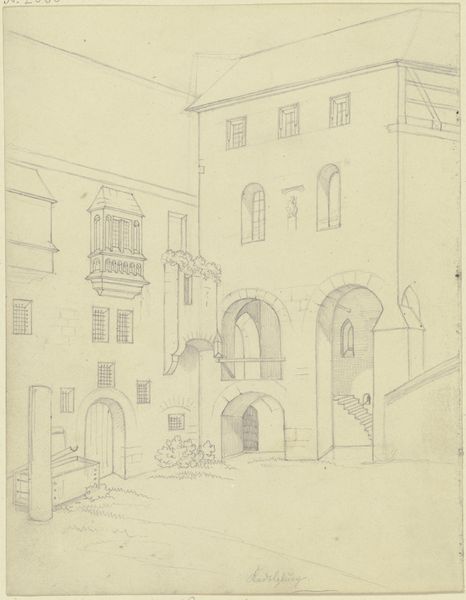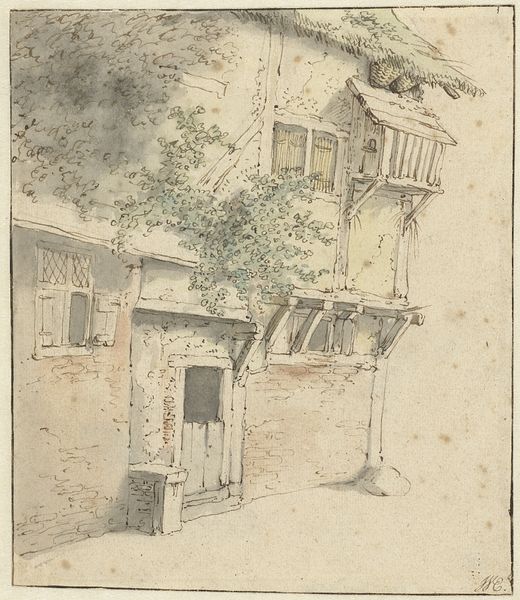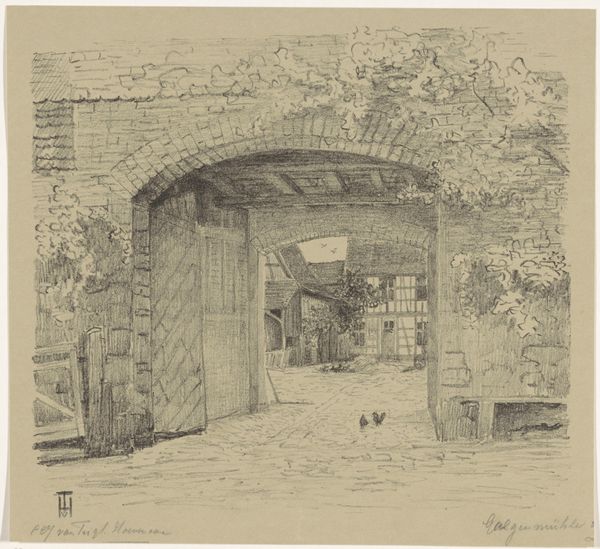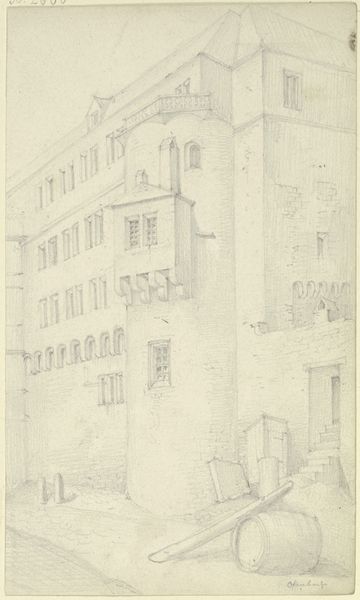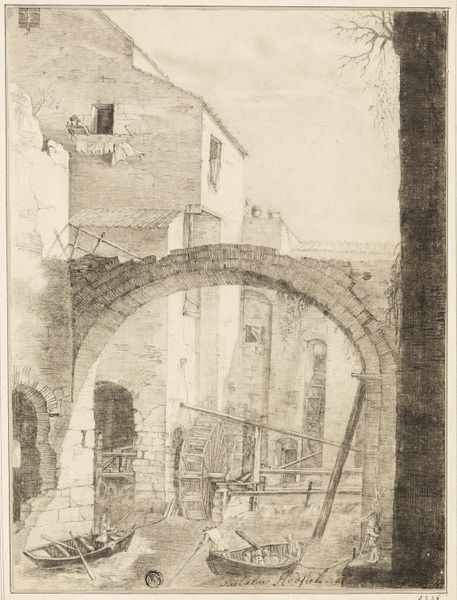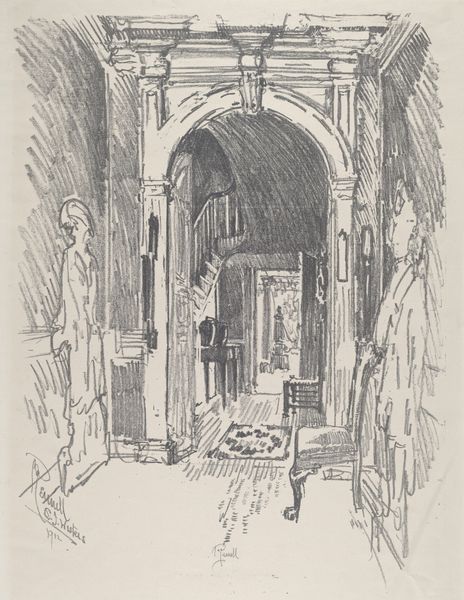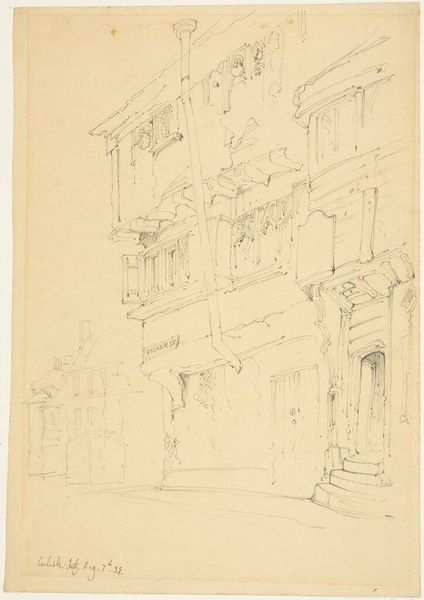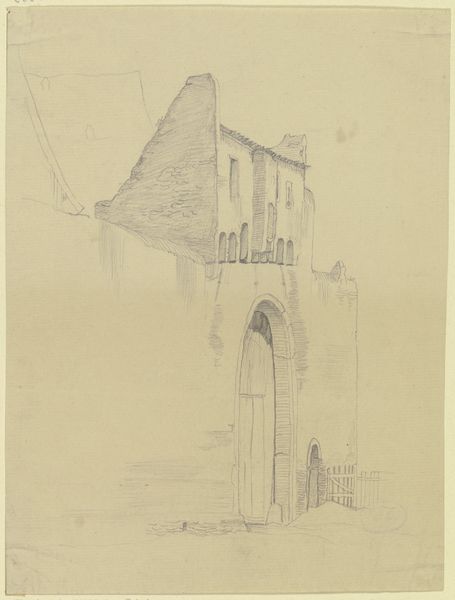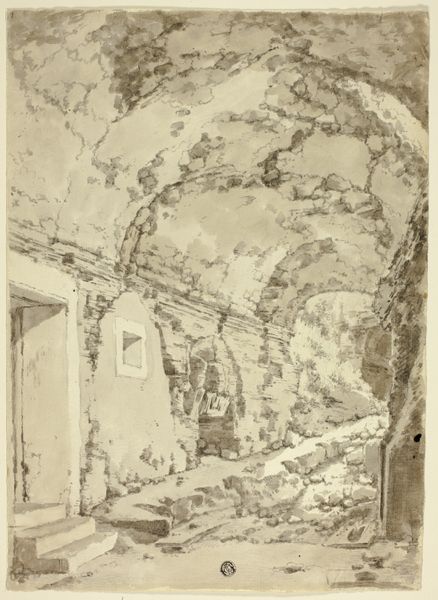
drawing, ink, pencil, architecture
#
drawing
#
ink
#
pencil
#
cityscape
#
architecture
Dimensions: 200 mm (height) x 130 mm (width) (bladmaal)
Curator: Wilhelm Marstrand's "Gård med del af søjlegang", a drawing created in 1837. The materials listed are primarily pencil and ink on paper. Editor: My initial impression is one of fragmented stillness, a sense of decay juxtaposed against a structured composition. The architecture, with its arcade and stonework, evokes a powerful sense of place. Curator: Absolutely, there's a strong sense of structure holding together what appears as ruin, as a symbolic framework through architectural components such as archways and linear details suggesting an open spatial matrix, though partially occluded or absent. The geometric interplay, for me, creates a compelling tension, particularly the windows as framing elements that create openings within openings. Editor: Thinking materially, look at how the varied application of pencil and ink builds texture—simulating stone, plaster, the rough-hewn quality of the courtyard's surfaces. How much of what is read as “decay” is really the nature of the rapid, almost reportage style drawing process using inexpensive available materials for the artist while traveling? I'd consider where these resources originate and where this aesthetic fits within the broader economic reality of nineteenth-century travel sketches. Curator: True, but that raw execution gives form to a deeper visual reading. The contrasts create this dialogue. A semiotic analysis might show that, in Marstrand’s careful positioning, the shadowed entrance on the right mirrors the columned portico on the left. Each invites a unique navigation of space—the unseen staircase promising ascension, while the obscured doorway hints at internal recesses. Editor: Right, these are interesting parallels; and how this drawing is very literally *grounded* by labor, how stone is quarried, transported, and dressed. In this light, can we analyze "taste" independent of these material origins? How is appreciation for an artist like Marstrand implicitly involved in larger socioeconomic forces? Curator: It's difficult to disassociate them, agreed. For me though, it becomes an artwork of subtle elegance within very definite constraints. Editor: Yes, the drawing resonates through those considered applications, and by grounding ourselves in both visuality and materiality we encounter its power more profoundly.
Comments
No comments
Be the first to comment and join the conversation on the ultimate creative platform.
